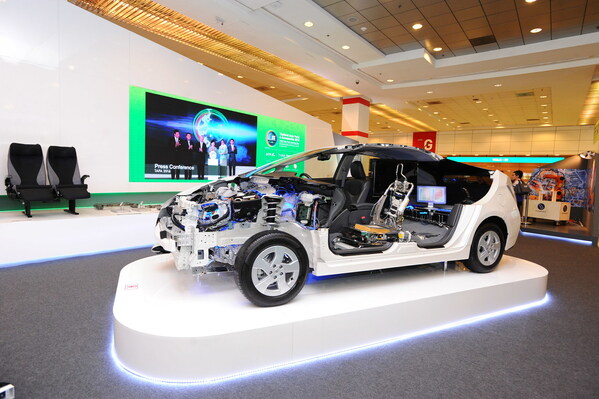BANGKOK, March 13, 2023 /PRNewswire/ -- Behind every strong local industry is a strong local supply chain. This is certainly the case for Thailand's automotive industry, which has over the past six decades established the kingdom as the leading automobile production base in Southeast Asia and the 11th largest worldwide. Automobiles and vehicle parts rank among the country's top exports items, with the sector earning in 2022 a total of US$37.6 billion of which auto parts and accessories accounted for US$15.6 billion, according to Commerce Ministry statistics. Major export markets for Thai-made auto parts include USA, Japan, Southeast Asia and Australia.

Thailand, the world’s 11th largest automobile production base, has a pool of 2,200 high quality auto parts and accessories manufacturers catering for both the OEM and After Market worldwide.
Successive Thai governments have through well-defined policy directives attracted all the major Japanese automotive brands to set up local production and export bases in Thailand along with leading European and US brands such as Mercedes Benz, BMW and Ford, and with them a cluster of parts suppliers. Recently, in keeping with the government's climate and environmental objectives, Thailand has persuaded Chinese EV makers to set up their regional production bases in the kingdom, including well-known brands BYD, MG and Great Wall Motor. Already, at least 50 Chinese EV auto parts suppliers have also set up offices in Thailand.
There are about 2,200 auto parts and accessories manufacturers already based in Thailand, assuring that local production is of high-quality, on-time and ultimately, profitable. Thailand's auto parts suppliers have over the decades become an industry unto themselves, exporting their products to over 100 counties worldwide. Many suppliers cater to the "After Market," or replacement market, a huge and reliable market given the world's estimated 1.8 billion used-car on the roads.
Among these parts producers, there are close to 500 mostly foreign owned firms, that supply the original equipment manufacturers (OEM) market segment, which in Thailand is dominated by Japanese brands. Many of these foreign OEM suppliers shifted their production bases to Thailand in the late 1980s, early 1990s, following the relocation of the main Japanese auto brands to Thailand, prompted by the appreciation of the Japanese Yen that made Japan based export less competitive.
Thailand managed to capture the lion's share of Japan's automotive manufacturing relocation in part because of its huge domestic market for one-ton pickup trucks, which still account for about 50% of domestic sales. The versatile pickup is well suited to Thailand's agricultural-based rural areas and for public transport. The Thai government cut excise taxes on the one-ton pickup models, which has helped to make Thailand the world's second largest pickup producer. After the success of the pickup policy, in the mid-2000s, the government launched a new tax scheme to promote small, petrol efficient eco-cars, which have come to dominate the domestic market for passenger cars and are a major export item.
These two schemes have created a huge domestic and overseas market not just for OEM parts, but also for After Market parts, which did well even during the COVID-19 period, when a shortage of semi-conductors hampered production of new car models.
"Normally, when the OEM market is not good the After Market is always good," said Sompol Tanadumrongsak, President of The Thai Auto Parts Manufacturing Association (TAPMA). TAPMA has 660 members, all majority Thai owned.
While the EV revolution promises to limit the auto parts industry worldwide, since EVs use only 1,200 parts compares with the 30,000 parts used in internal combustion engine (ICE) vehicles, Sompol believes there is still plenty of time to survive and adjust. "EVs are taking off but I don't think they will reach 30% of the market for another ten years, so the After Market is still 70%."